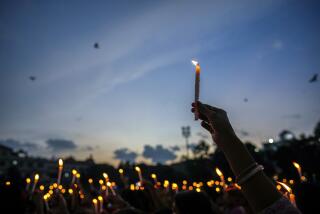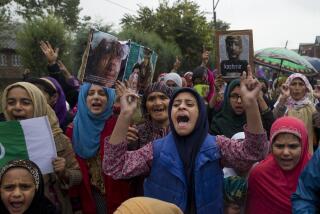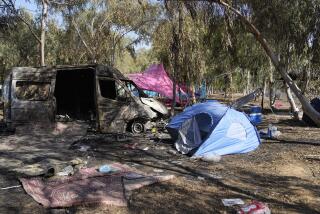Back Story: Why India’s rape crisis is getting worse under Narendra Modi
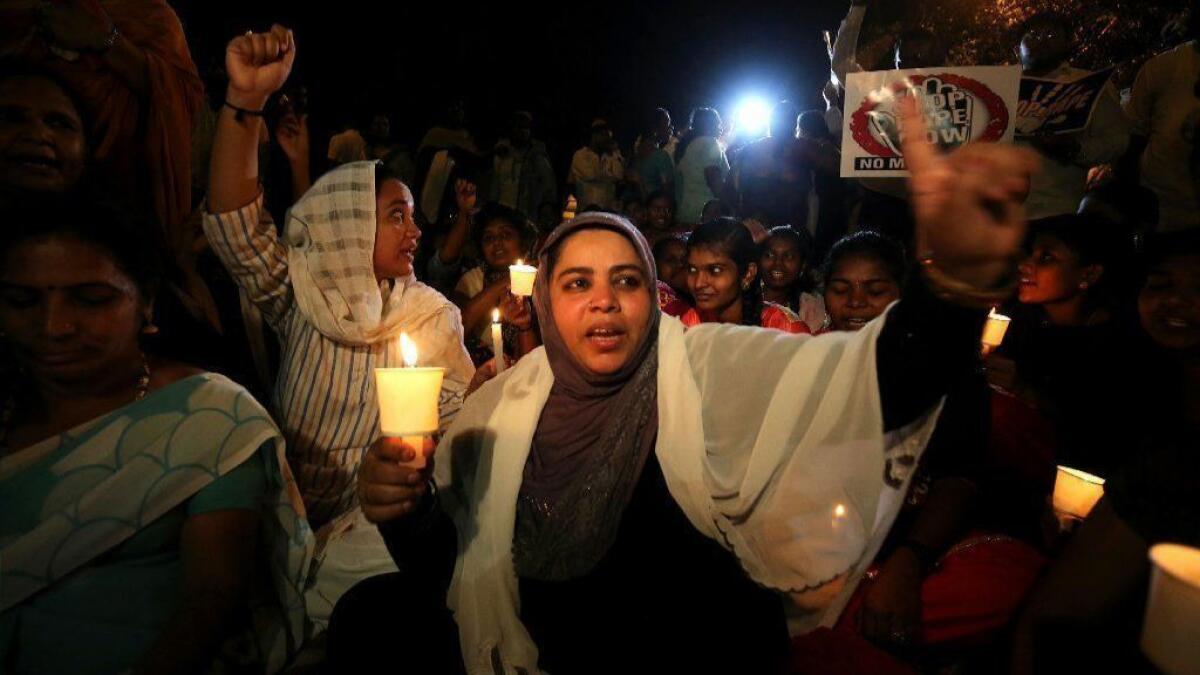
- Share via
Reporting from Mumbai, India — An 8-year-old Muslim girl was locked in a Hindu shrine, drugged, gang-raped for several days and bludgeoned to death with a stone.
As if the January killing in northern India weren’t horrifying enough, lawyers and right-wing Hindus this month marched in defense of her assailants. Prime Minister Narendra Modi waited several days before condemning the crime, which was reported by police this month, then accused his critics of politicizing the issue.
The case has provoked nationwide outrage not seen since 2012, when a 23-year-old physiotherapist was gang-raped and killed on a bus in New Delhi. That crime prompted calls for tougher laws to address the nearly 39,000 sexual assaults that occur in this country every year.
But more than five years later, the number of rapes reported to police is rising. And the attack on the girl is just one of a series of recent cases that suggest India’s religious and political divisions — which are widening under Modi’s Hindu nationalist government — are making the crisis worse.
Who is the victim?
Eight-year-old Asifa was a member of a nomadic Muslim community that takes its sheep and goats to graze during the winter in a part of India’s Jammu and Kashmir state that is dominated by Hindus, India’s predominant religion.
Tension had been building for years over whether the nomads, known as Bakarwals, should have grazing rights. Jammu and Kashmir is India’s only majority-Muslim state, its northern end home to a long-running separatist insurgency.
According to authorities, Sanji Ram, a retired bureaucrat, hatched a conspiracy to kill the girl in an effort to drive the nomads from the area. One day in January, when Asifa went to bring home the family’s horses, Ram’s nephew abducted her and locked her in the temple, where Ram is the caretaker.
Sedated with local drugs, she was raped repeatedly — including by Ram’s son, who was summoned from 300 miles away to “satisfy his lust” — before being bashed in the head with a 2-pound stone and dumped in a forest, where her body lay for three days, police said. Two local police officers accepted nearly $5,000 in bribes from Ram to destroy evidence, according to police.
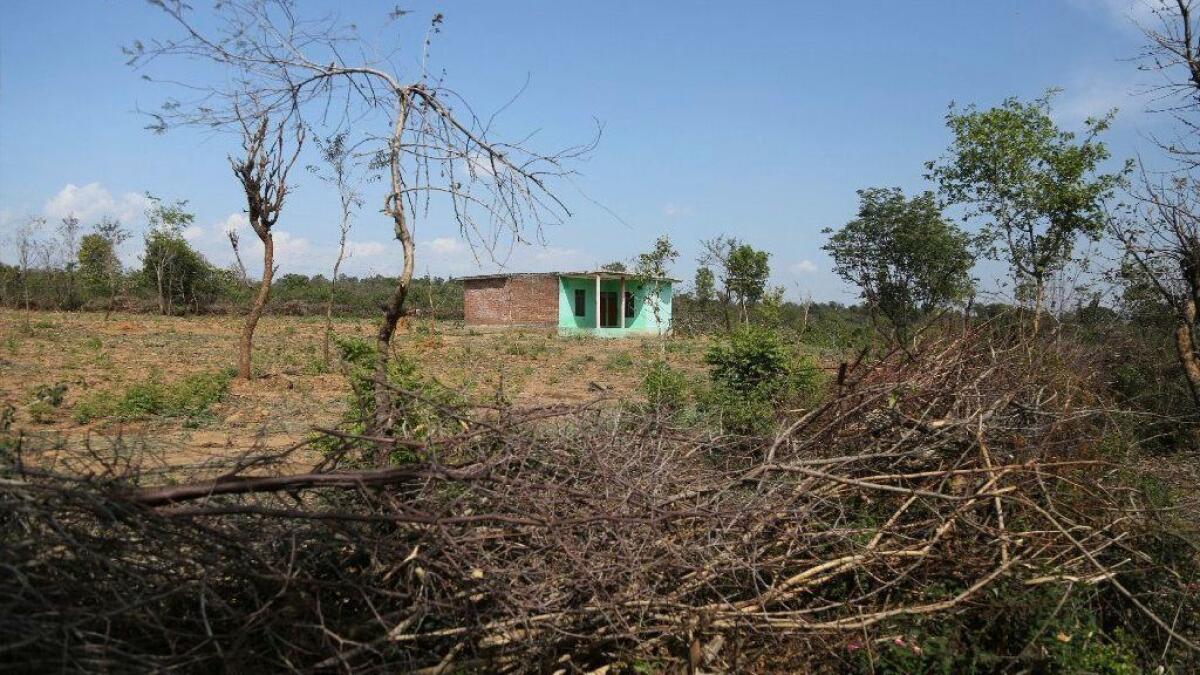
A backdrop of communal violence
The case received little attention until the police report became public this month, its grisly details and motive for the crime adding to the atrocities suffered by Muslims under Modi’s government.
Hindu extremists have been accused of killing Muslims whom they falsely accused of possessing beef, which is anathema to orthodox Hindus. Others have claimed a plot by Muslims to overtake the country — which is 80% Hindu — by forcibly converting Hindu brides to Islam, a practice they dub “love jihad.”
In this case, a newly formed right-wing group called Hindu Ekta Manch, or Forum for Hindu Unity, organized rallies in defense of the eight men arrested in the Asifa case, arguing they had been framed. Some demonstrators waved the tricolor Indian flag. Among the participants were two state officials with Modi’s Bharatiya Janata Party, or BJP, who later were forced to resign.
Last week, when police attempted to submit charges against the men — who pleaded not guilty — the courthouse was blocked by a group of lawyers who said the investigation was harassing Hindus. Misinformation on right-wing social media channels contended that Asifa hadn’t been raped, prompting state police to issue a statement over the weekend saying that the facts of the case were “established beyond doubt.”
Pratap Bhanu Mehta, one of India’s foremost public intellectuals, wrote that the public responses suggested that the country’s moral compass had been destroyed and that “state, law, civil society, now understand only a sectarian language.”
Another rape fans outrage
At the same time, in northern Uttar Pradesh state, a teenage girl attempted to light herself on fire outside the residence of the state’s top official, a hard-line member of Modi’s party.
The girl accused a BJP lawmaker of raping her at his house last year. Police had ignored her, she said, and when she refused to withdraw the complaint, the lawmaker’s brother and several other men allegedly beat her father so badly that he died of his injuries.
For several days, police said there was no need to arrest the lawmaker, Kuldeep Singh Sengar. It wasn’t until a court accused the state government of working in league with Sengar that he was taken into custody last week.
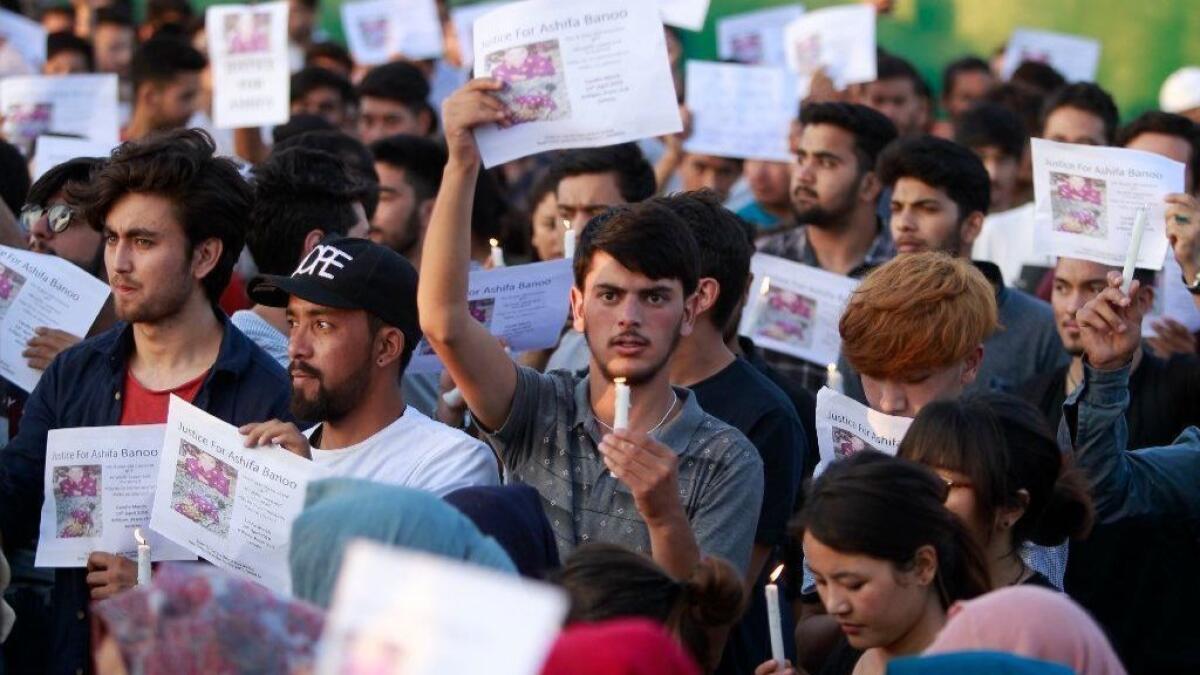
Has anything changed since 2012?
India introduced measures to speed up prosecutions of rape cases and expanded the definition of sex crimes to include stalking and voyeurism. There was a 12% rise in rape-related cases in 2016 in part because women felt more emboldened to report crimes.
But the national statistics remain shocking. In 40% of the rape cases, the victims were under 18. Courts move so slowly that one children’s rights organization estimated that if no new child sexual abuse cases were brought after 2016, it still would take India’s justice system 20 years to conclude pending trials.
“So much rape and sexual abuse still doesn’t get reported because going to the police is still a nightmare,” said Deepa Narayan, a social scientist and author of a recent book on Indian women.
“In these recent cases, the courts have had to step in, and that’s frightening. If you don’t have political clout or your story doesn’t become a national or international story, forget justice.”
The government said last week that it was considering tougher penalties for rape cases, including the death penalty in crimes in which the victim is younger than 12.
Is Modi’s government to blame?
Modi, who took office in 2014 and is seeking reelection next year, is a savvy communicator who skillfully uses social media. But he has been noticeably taciturn on the subject of communal violence.
Much of it is attributed to groups with loose ties to the Rashtriya Swayamsevak Sangh, a hard-line Hindu organization that is the ideological parent of Modi’s party. They include groups that have been accused of assaulting university students and self-styled vigilantes who aim to protect cows.
This week, a group of retired civil servants blasted Modi for “the agenda of division and hate your party and its innumerable, often untraceable offshoots that spring up from time to time, have insidiously introduced” into Indian life.
More than 600 academics from India and overseas followed that with an open letter calling the rapes “part of a pattern of repeated targeted attacks” on minorities. They said the violence was worst in states run by the BJP, creating “an undeniable association with the ruling dispensation.”
Modi condemned the rapes only after they had generated international headlines. When he did so, his words were vague and tinged with the patriarchal attitude that Narayan said infects most Indian thinking about women: “Our daughters will get justice.”
Special correspondent Parth M.N. contributed to this report.
Shashank Bengali is South Asia correspondent for The Times. Follow him on Twitter at @SBengali
More to Read
Sign up for Essential California
The most important California stories and recommendations in your inbox every morning.
You may occasionally receive promotional content from the Los Angeles Times.
